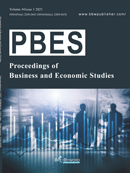Abstract
With the development of the internet, online pop-up advertisements (hereinafter, referred to as pop-up ads) have emerged. However, online users may disdain and reject online advertisements, which affects online purchase intention. This study is on reducing the negative impact of pop-up ads on users and improving the commercial effect. Self-administered questionnaires were used to survey online users and website designers. The data collected were analyzed using SPSS and the open answers were sorted out by thematic analysis. The results revealed that attractive storylines, background music, and exquisite visual presentations are effective in reducing users’ rejection to pop-up ads as well as advertisement customization. It is better for pop-up ads to appear in the middle or end of videos. The VIP system is also a choice for users to eliminate them. Designers are supposed to keep a balance between users and advertisers. In addition, internet regulation needs to be strengthened to reduce eroticism and violence in pop-up ads as well as avoid the negative impact of these kind of pop-up ads on minors.
References
Le T, Vo H, 2017, Consumer Attitude towards Website Advertising Formats: A Comparative Study of Banner, Pop-Up and In-Line Display Advertisements. Internet Marketing and Advertising, 11(3): 202-217.
Briggs R, Hollis N, 1997, Advertising on the Web: Is There Response Before Click-Through?. Journal of Advertising Research, 37(2): 33-45.
Chatterjee P, 2008, Are Unclicked Ads Wasted? Enduring Effects of Banner and Pop-Up Ad Exposures on Brand Memory and Attitudes. Journal of Electronic Commerce Research, 9(1): 51-61.
McCoy S, Everard A, Polak P, et al., 2007, The Effects of Online Advertising. Communications of the ACM, 50(3): 84-88.
Rehman M, Fakhar A, Siddiqui DA, 2021, Pop-Up AD – Hit or Miss?. SSRN. https://ssrn.com/abstract=3813312 or http://dx.doi.org/10.2139/ssrn.3813312 (accessed on September 24, 2021).
Kaiser C, F Bodendorf, 2012, Mining Consumer Dialog in Online Forums. Internet Research, 22(3): 275-297.
Hsieh A, Lo S, Chiu Y, 2016, Where to Place Online Advertisements?. Journal of Electronic Commerce Research, 17(1): 36-46.
Pasqualotti L, Baccino T, 2014, Online Advertisement: How Are Visual Strategies Affected by the Distance and the Animation of Banners?. Frontiers in Psychology, 5(1): 1-11.
Alwitt LF, Prabhaker PR, 1994, Identifying Who Dislikes Television Advertising: Not by Demographics Alone. Journal of Advertising Research, 34(6): 17-29.
Dehghani M, Niaki MK, Ramezani I, et al., 2016, Evaluating the Iinfluence of YouTube Advertising for Attraction of Young Customers. Comput Hum Behav, 59: 165-172.
Chowdhury HK, Parvin N, Weitenberner C, et al., 2006, Consumer Attitude Toward Mobile Advertising in an Emerging Market: An Empirical Study. International Journal of Mobile Marketing, 1(2): 33-42.
Doorn VJ, Hoekstra JC, 2013, Customization of Online Advertising: The Role of Intrusiveness. Marketing Letters, 24(4): 339-351.
Bruce M, Daly L, 2007, Design and Marketing Connections: Creating Added Value. Journal of Marketing Management, 23(9-10): 929-953.
Cho CH, 1999, How Advertising Works on the World Wide Web: Modified Elaboration Likelihood Model. Journal of Current Issues and Research in Advertising, 21(1): 33-49.
Bai Y, Zhao X, Cocker H, 2017, Wechat Brands: Communal Interaction and Brand Publicity in Chinese Social Media. Advances in Consumer Research, 45: 511.
